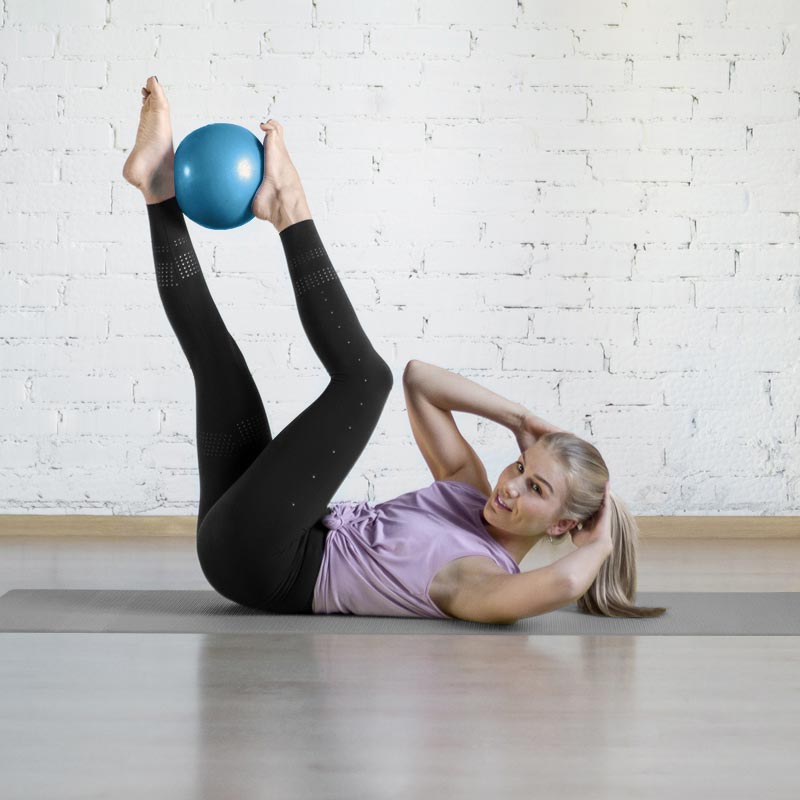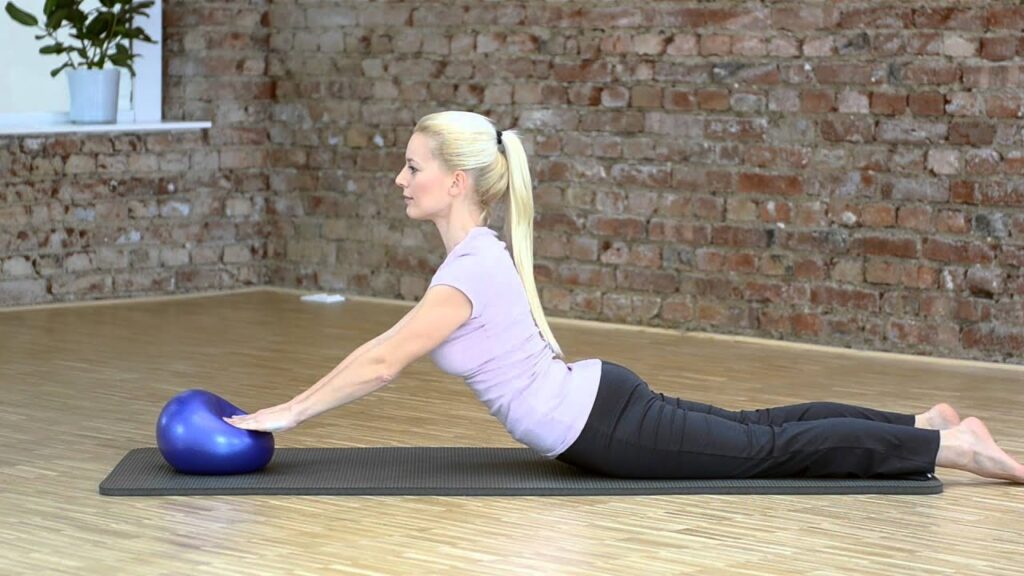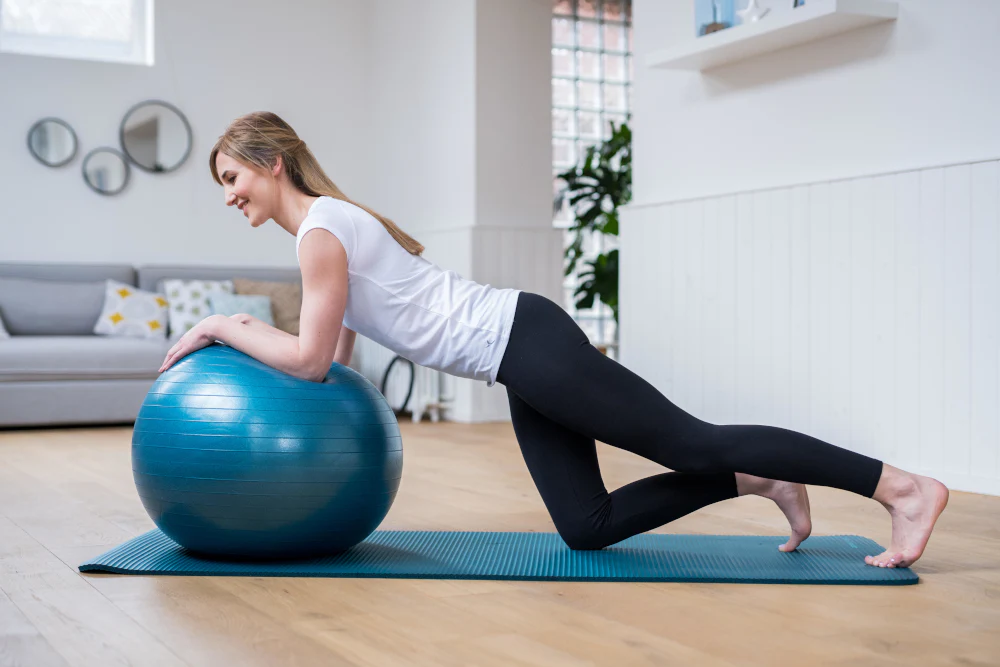Introduction to Pilates Balls
Pilates balls, also known as stability balls or Swiss balls, have become an essential tool in the realm of fitness and rehabilitation. These versatile pieces of equipment are not only popular in Pilates studios but are also widely used in gyms and home workouts. Their unique design allows for a range of exercises that target small muscle groups, enhancing strength, stability, and flexibility.
Incorporating Pilates ball into a workout routine can lead to significant improvements in core strength and overall muscle tone. They are particularly effective for engaging those often neglected smaller muscles that play a crucial role in maintaining balance and posture. This article delves into the benefits of Pilates balls, how to use them effectively, and the types of exercises that can be performed to maximise their potential.
One of the most compelling aspects of Pilates balls is their ability to adapt to various fitness levels and goals. Whether you are a seasoned athlete or a beginner, these balls can be utilised to create a challenging workout that suits your needs. For instance, beginners might start with simple seated exercises to develop stability, while more advanced practitioners can incorporate dynamic movements that require greater coordination and strength. Furthermore, the instability of the ball forces the body to engage stabilising muscles, which can lead to enhanced proprioception and body awareness over time.
Additionally, Pilates balls are not just limited to traditional Pilates exercises; they can be seamlessly integrated into other fitness regimes, such as yoga or strength training. This versatility makes them an excellent investment for anyone looking to diversify their workout routine. Many fitness enthusiasts have found that using a Pilates ball during strength training exercises, such as push-ups or squats, can significantly increase the intensity and effectiveness of their workouts. Moreover, the added challenge of balancing on the ball can help to improve overall functional fitness, which is essential for everyday activities.
Benefits of Using Pilates Balls
Enhanced Core Strength
One of the primary benefits of using Pilates balls is the enhancement of core strength. The instability of the ball forces the body to engage stabilising muscles, particularly those in the abdominal area. This engagement is vital for developing a strong core, which is essential for overall fitness and injury prevention.
When performing exercises on a Pilates ball, the body must work harder to maintain balance. This increased effort leads to greater activation of the deep abdominal muscles, including the transverse abdominis, which is often referred to as the body’s natural corset. Strengthening these muscles can improve posture, reduce back pain, and enhance athletic performance.
Improved Flexibility and Balance
In addition to building strength, Pilates balls are excellent for improving flexibility and balance. The dynamic nature of exercises performed on the ball requires the body to adapt and adjust, promoting greater flexibility in the muscles and joints. This adaptability is crucial for overall mobility and can help prevent injuries.
Furthermore, the use of a Pilates ball challenges the body’s balance, encouraging the development of proprioception—the awareness of body position in space. Enhanced balance not only benefits athletic performance but also contributes to better stability in daily activities, reducing the risk of falls, particularly in older adults.
Versatility in Workouts
Another significant advantage of Pilates balls is their versatility. They can be used for a wide range of exercises, catering to various fitness levels and goals. From beginners to advanced practitioners, there are countless ways to incorporate Pilates balls into a workout routine.
Whether it’s for strength training, rehabilitation, or flexibility work, Pilates balls can adapt to the needs of the user. They can be used alone or in conjunction with other equipment, making them a valuable addition to any fitness regimen.
How to Use Pilates Balls Effectively
Choosing the Right Size
Before diving into exercises, it is crucial to select the right size Pilates ball. The size of the ball can significantly impact the effectiveness of workouts and overall safety. Generally, the correct ball size is determined by the user’s height. A quick guide is as follows:
- Under 5’0″: 45 cm ball
- 5’0″ to 5’5″: 55 cm ball
- 5’6″ to 6’0″: 65 cm ball
- Over 6’0″: 75 cm ball
It is essential to ensure that when seated on the ball, the knees are at a right angle and the feet are flat on the floor. This positioning allows for optimal stability and comfort during exercises.
Warm-Up and Safety Precautions
As with any workout, warming up is vital to prepare the body and prevent injuries. A simple warm-up can include gentle stretches and movements that engage the core and increase blood flow to the muscles. Additionally, it is essential to maintain proper form during exercises to avoid strain or injury.
When using a Pilates ball, safety precautions should be taken into account. Ensure the ball is properly inflated and free from any punctures or damage. It is also advisable to use the ball on a non-slip surface to prevent it from rolling away during exercises.

Effective Exercises with Pilates Balls
Core Engagement Exercises
There are numerous exercises that can be performed with a Pilates ball to engage the core effectively. One popular exercise is the ball pass, where the ball is passed between the hands and feet while lying on the back. This movement challenges the core and improves coordination.
Another effective exercise is the ball plank. By placing the forearms on the ball while in a plank position, the body must engage the core to maintain stability. This variation of the plank not only strengthens the core but also enhances shoulder stability.
Lower Body Strengthening
Pilates balls can also be used to strengthen the lower body. One effective exercise is the wall squat with a ball. By placing the ball between the lower back and the wall, individuals can perform squats while maintaining proper alignment. This exercise targets the quadriceps, hamstrings, and glutes.
Another excellent lower body exercise is the ball bridge. Lying on the back with the feet on the ball, individuals can lift their hips to create a straight line from the shoulders to the knees. This movement activates the glutes and hamstrings while also engaging the core.
Upper Body Conditioning
For upper body conditioning, the Pilates ball can be utilised in various ways. One effective exercise is the ball push-up. By placing the hands on the ball while performing push-ups, the instability challenges the chest, shoulders, and triceps, leading to greater muscle activation.
Additionally, seated ball twists can be performed to engage the obliques. Sitting on the ball with feet flat on the floor, individuals can twist the torso side to side, engaging the core and improving rotational strength.
Integrating Pilates Balls into Your Routine
Creating a Balanced Workout Plan
To maximise the benefits of Pilates balls, it is essential to integrate them into a balanced workout plan. This plan should include a mix of strength training, flexibility work, and cardiovascular exercises. By doing so, individuals can achieve a well-rounded fitness routine that targets all muscle groups.
Incorporating Pilates balls into existing workouts can be as simple as substituting traditional exercises with ball variations. For instance, replacing regular sit-ups with ball crunches can add an element of challenge and engage more muscles.
Tracking Progress and Setting Goals
As with any fitness journey, tracking progress and setting goals is crucial for maintaining motivation. Keeping a record of workouts, noting improvements in strength and flexibility, can provide a sense of accomplishment and encourage consistency.
Setting achievable goals, such as mastering a new exercise or increasing the number of repetitions, can help individuals stay focused and committed to their fitness journey. Pilates balls can serve as a tool to reach these goals, providing a fun and engaging way to challenge the body.

Conclusion
Pilates balls are a fantastic addition to any fitness routine, offering numerous benefits for targeting small muscle groups. Their ability to enhance core strength, improve flexibility, and provide versatility in workouts makes them an invaluable tool for individuals of all fitness levels.
By understanding how to use Pilates balls effectively and integrating them into a balanced workout plan, individuals can unlock their full potential. The journey to a stronger, more balanced body begins with the simple yet powerful Pilates ball. Whether in a studio, gym, or at home, these balls can help transform fitness routines and lead to lasting results.
Embracing the use of Pilates balls can not only enhance physical fitness but also contribute to overall well-being. As more people discover the benefits of this dynamic equipment, it is clear that Pilates balls are indeed the secret to targeting those small yet essential muscle groups.
See Also: Wunda Chair Pilates Australia: what you need to know.

